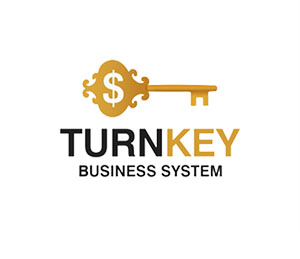Microsoft Warns of New Cryptovirus Targeting Crypto Wallets

Microsoft Warns of New Cryptovirus Targeting Crypto Wallets
Microsoft has recently issued a warning about a new strain of malware designed to steal sensitive information from users, particularly targeting cryptocurrency wallets and browser credentials.
Dubbed StilachiRAT, this remote access trojan (RAT) poses a significant threat to both individual users and organizations.
The malware is capable of infiltrating systems, extracting critical data, and even maintaining persistence after removal.
This article delves into the details of StilachiRAT, its capabilities, and how users can protect themselves from such threats.
Dubbed StilachiRAT, this remote access trojan (RAT) poses a significant threat to both individual users and organizations.
The malware is capable of infiltrating systems, extracting critical data, and even maintaining persistence after removal.
This article delves into the details of StilachiRAT, its capabilities, and how users can protect themselves from such threats.

Microsoft Warns of New Cryptovirus Targeting Crypto Wallets
What is StilachiRAT?
StilachiRAT is a sophisticated remote access trojan that grants attackers unauthorized access to infected systems. Once installed, it can extract sensitive information, including login credentials, clipboard data, and system details. The malware specifically targets cryptocurrency-related data, making it a significant threat to crypto enthusiasts and investors.Key Features of StilachiRAT:
Data Theft: Collects usernames, passwords, and clipboard content, which often contains sensitive information like crypto wallet addresses and private keys.
System Profiling: Gathers detailed information about the infected system, including hardware specifications, installed applications, and remote session data.
Persistence: Can automatically reinstall itself after being removed, making it difficult to eradicate.
Remote Control: Allows attackers to execute commands on the infected system, such as rebooting, clearing logs, or launching applications.
How Does StilachiRAT Work?
StilachiRAT primarily targets users of the Google Chrome browser, exploiting its extensions to steal data. The malware is designed to attack over 20 browser extensions, including popular cryptocurrency wallets such as:MetaMask, Coinbase Wallet, Trust Wallet, OKX Wallet,
Bitget Wallet, TronLink, ConfluxPortal, Phantom
Once installed, StilachiRAT continuously monitors the clipboard for sensitive information, such as cryptocurrency addresses and private keys. It also uses specific search terms related to Tron (TRX), such as "TRX address" and "TRX key," to identify and extract valuable data.
The Impact of StilachiRAT
The consequences of a StilachiRAT infection can be severe, especially for cryptocurrency users. Here’s how the malware can affect its victims:Financial Losses
By stealing private keys and wallet credentials, attackers can drain cryptocurrency wallets, leading to significant financial losses.
Identity Theft
The malware can harvest login credentials for various online accounts, putting users at risk of identity theft and fraud.
System Compromise
StilachiRAT grants attackers remote control over infected systems, allowing them to execute malicious commands or install additional malware.
Data Breaches
Organizations infected with StilachiRAT may face data breaches, exposing sensitive customer or corporate information.
How to Protect Yourself from StilachiRAT
Given the stealthy nature of StilachiRAT, it’s crucial to take proactive measures to protect your systems and data. Here are some recommended steps:1. Use Official Sources for Software Installation
Always download software, especially browser extensions and cryptocurrency wallets, from official sources. Avoid third-party websites, as they may distribute infected files.
2. Install Antivirus Software
Use reputable antivirus and anti-malware programs to detect and remove threats like StilachiRAT. Keep your antivirus software updated to ensure it can recognize the latest threats.
3. Enable Two-Factor Authentication (2FA)
Adding an extra layer of security to your accounts can prevent unauthorized access, even if your credentials are compromised.
4. Monitor Clipboard Activity
Be cautious when copying and pasting sensitive information, such as cryptocurrency addresses or private keys. Consider using dedicated clipboard management tools to monitor and secure clipboard data.
5. Regularly Update Software
Keep your operating system, browser, and all installed applications up to date. Software updates often include security patches that protect against known vulnerabilities.
6. Avoid Suspicious Links and Attachments
Phishing emails and malicious websites are common vectors for malware distribution. Avoid clicking on suspicious links or downloading attachments from unknown sources.
7. Backup Your Data
Regularly back up important files and data to an external drive or cloud storage. In the event of an infection, you can restore your system without losing critical information.
The Broader Threat Landscape
StilachiRAT is just one example of the growing threat posed by malware targeting cryptocurrency users. As the adoption of digital assets increases, so does the interest of cybercriminals in exploiting vulnerabilities. Other notable threats in this space include:Cryptojacking: Malware that hijacks a victim’s computing resources to mine cryptocurrency.
Ransomware: Malware that encrypts files and demands payment in cryptocurrency for their release.
Phishing Attacks: Fraudulent attempts to steal login credentials and private keys through fake websites or emails.
Microsoft’s Response and Recommendations
Microsoft has been actively monitoring StilachiRAT since its discovery in November 2024. While the malware has not yet achieved widespread distribution, its stealthy nature makes it a significant concern. Microsoft has urged users to:Stay Vigilant: Be cautious when installing software or browser extensions.
Use Security Tools: Leverage antivirus programs and malware detection tools to identify and remove threats.
Report Suspicious Activity: Notify Microsoft or other cybersecurity authorities if you encounter suspicious software or behavior.
The Future of Cybersecurity in the Crypto Space
As cryptocurrencies continue to gain mainstream adoption, the need for robust cybersecurity measures becomes increasingly critical. Developers, users, and organizations must work together to address vulnerabilities and protect against evolving threats. Key areas of focus include:Enhanced Wallet Security
Cryptocurrency wallet providers should implement advanced security features, such as hardware wallet integration and multi-signature authentication.
User Education
Educating users about common threats and best practices can significantly reduce the risk of malware infections.
Regulatory Frameworks
Governments and regulatory bodies should establish guidelines to ensure the security of cryptocurrency platforms and protect users from fraud.
Collaboration Between Tech Companies
Collaboration between tech giants like Microsoft, Google, and cybersecurity firms can help identify and mitigate emerging threats more effectively.
Conclusion: Staying Safe in a Digital World
The emergence of StilachiRAT highlights the ongoing challenges in cybersecurity, particularly in the cryptocurrency space. While the malware poses a significant threat, users can protect themselves by adopting best practices and leveraging advanced security tools.As the digital landscape continues to evolve, staying informed and proactive is essential. By taking the necessary precautions, you can safeguard your data, assets, and privacy from malicious actors. Remember, cybersecurity is a shared responsibility—stay vigilant and protect yourself from threats like StilachiRAT.
#Cybersecurity #Cryptocurrency #MalwareProtection














Report
My comments